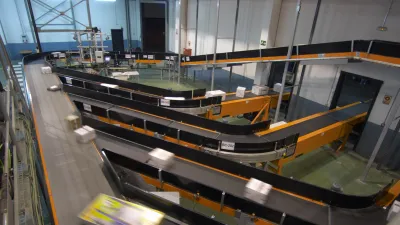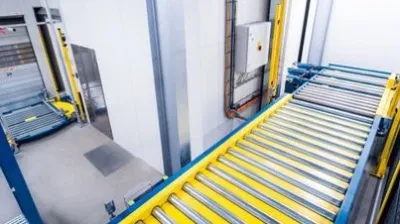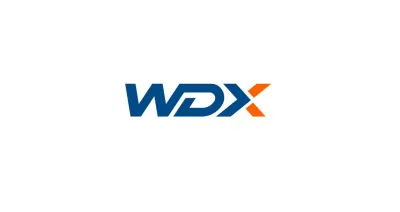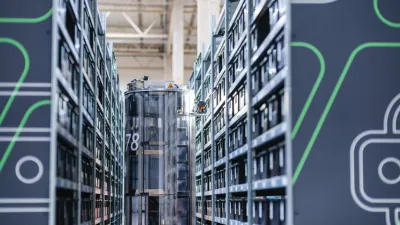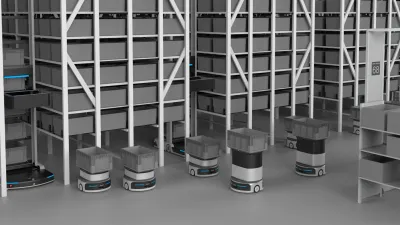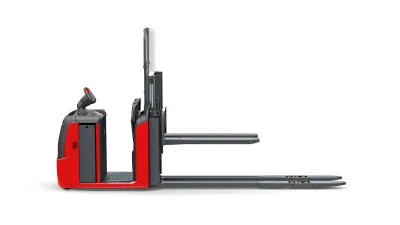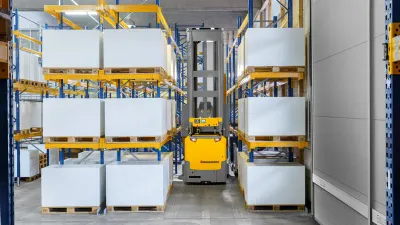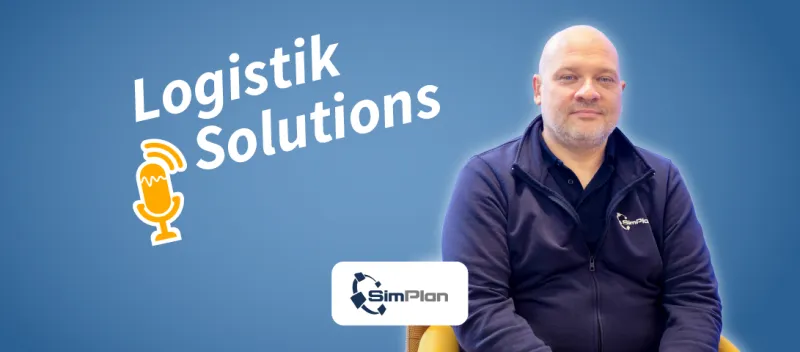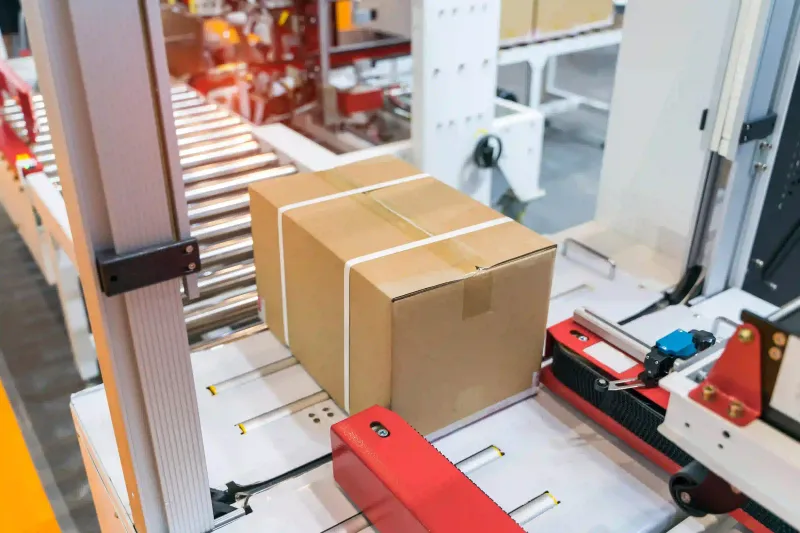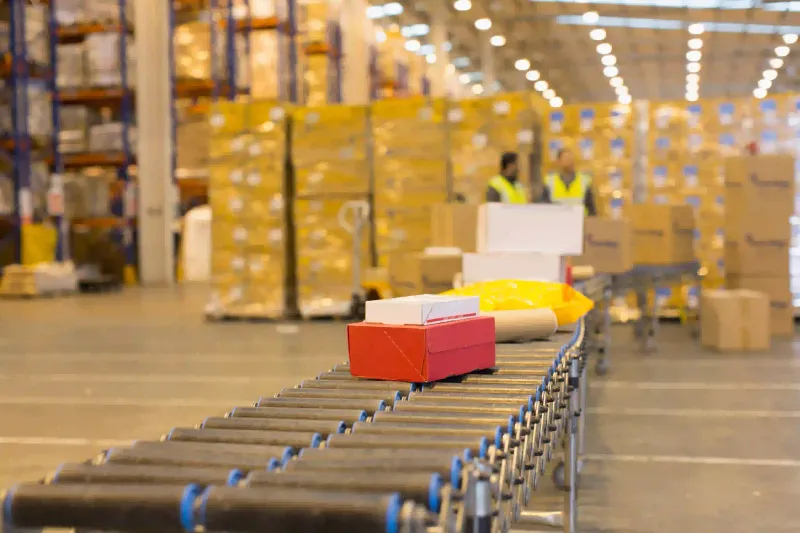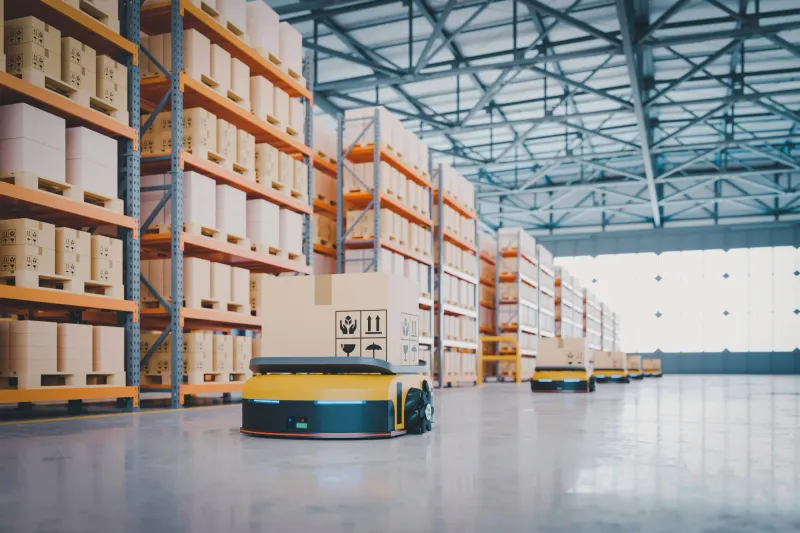Logistics automation: Conveyor System and Automated Guided Vehicles
Do you also believe that the future of logistics lies in Automated Guided Vehicles (AGV)? Discover the differences and advantages of conveyor system and automated guided vehicles.
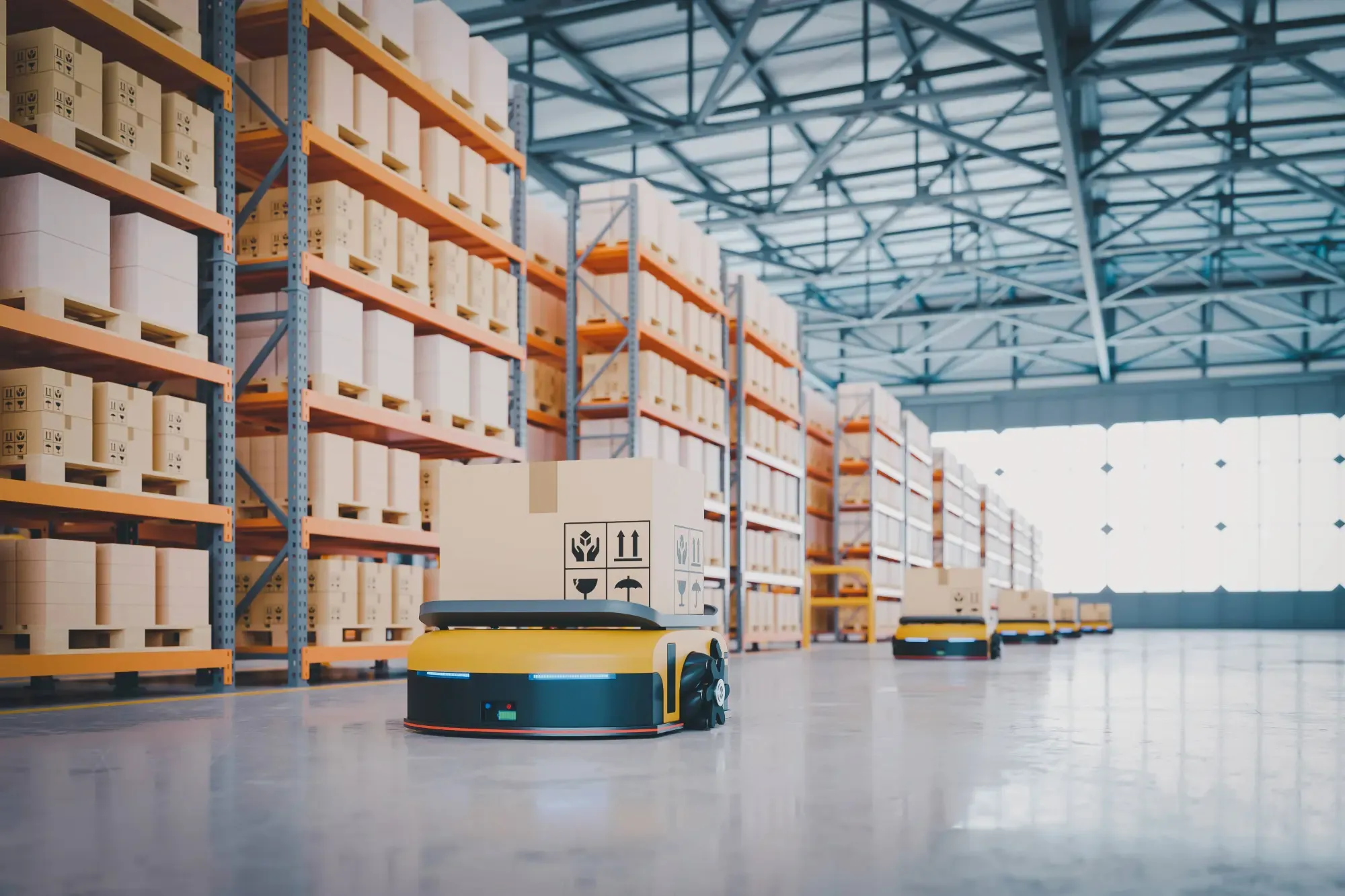 Modern intralogistics with Automated Guided Vehicles is autonomous, precise and scalable.
Modern intralogistics with Automated Guided Vehicles is autonomous, precise and scalable.Why automation is indispensable in logistics
Automation plays a crucial role in modern logistics. It not only contributes to increased efficiency, but also reduces the error rate and lowers your overall operating costs. With well-automated processes, companies can react more quickly to market changes and make their supply chains more flexible.
In addition, automation can improve working conditions: heavy lifting and monotonous tasks are eliminated, allowing employees to concentrate on more complex and value-adding activities.
The basics of conveyor technology
Conveyor systems encompasses a wide range of technologies and systems used to transport goods within a warehouse or production facility. These include conveyor belts, roller conveyors, elevators, and many other mechanical systems. Common components also include chain conveyors, lift tables, scissor lifts, and automated sorting systems. Depending on requirements, these solutions can be modularly adapted and flexibly integrated into existing logistics processes. Modern conveyor technology also uses intelligent controls and sensors to optimize transport routes, minimize downtime, and enable continuous monitoring of the material flow.
The goal is a smooth material flow with shorter throughput times and reduced bottlenecks.
Automated Guided Vehicles: The next generation of logistics
Automated Guided Vehicles (AGV) are autonomous vehicles that transport goods within a defined area. They use state-of-the-art technologies such as sensors, cameras, GPS, and laser scanners to navigate efficiently and safely on their own, as well as to reliably detect and avoid obstacles and people. These systems are often integrated into the higher-level IT infrastructure so that orders and routes can be assigned and tracked digitally. They can be seamlessly integrated into existing logistics processes and enable detailed control and monitoring of internal material flows.
AGVs offer numerous advantages, including greater flexibility and scalability. Depending on the design, they can respond quickly to changing requirements and are ideal for use in dynamic environments. In addition, their adaptive software connection enables the management of large vehicle fleets and the intelligent prioritization of transport orders. By relieving employees of repetitive transport tasks, AGVs also contribute significantly to increasing process reliability and reducing sources of error.
Comparison: Conveyor Sytems vs. Automated Guided Vehicles
Conveyor Sechnology and AGVs each offer different advantages and are suitable for different applications. While conveyor technology is ideal for constant and repeatable processes that require high throughput and consistent quality, AGVs offer greater flexibility and adaptability, especially when different goods flows and variable work processes need to be designed efficiently. Conveyor technology impresses with its robustness, durability, and ability to move large quantities of goods automatically. This makes it particularly attractive for companies with continuous production or storage processes where a smooth and uninterrupted flow of materials is essential.
AGVs are generally more expensive to purchase, but can save costs in the long term by increasing efficiency and reducing the need for manual intervention. They also allow for flexible adaptation to changing process requirements, as their components can be reprogrammed or supplemented using software without having to make major changes to the existing infrastructure. In addition, AGVs offer a clear advantage in seasonal fluctuations or dynamically growing operations thanks to their scalability and fleet control capabilities. Conveyor technology, on the other hand, is often cheaper and easier to implement, but requires regular maintenance and can be less flexible when process changes or system expansion become necessary. Companies are therefore faced with the task of finding the optimal balance between investment costs, flexibility requirements, and process reliability in order to realize maximum added value for their individual logistics requirements.
How to choose the right system for your company
Choosing the right system depends on various factors, including the type of goods to be transported, the available budget, and the specific requirements of the company. A thorough analysis of current processes and a clear definition of objectives are crucial. Industry-specific conditions, existing infrastructure, and future growth forecasts must also be taken into account. Important decision criteria also include the depth of integration of the systems into existing IT landscapes, scalability, maintenance requirements, training needs for employees, and compliance with applicable safety and quality standards. Companies should also consider combining both systems to take advantage of their respective benefits. A hybrid solution can often be the best option for achieving maximum efficiency and flexibility. The targeted combination of conveyor technology and driverless transport systems creates synergy effects that enable both standardized and dynamic logistics processes to be optimally mapped. As a result, companies benefit from greater process reliability, efficient use of space, and increased responsiveness to changing market requirements. The individual design of such hybrid concepts should always be tailored to the specific goals and challenges of the respective business in order to achieve a sustainable and economical result.
How can Motion-Mining® help?
- Make flexibility measurable: Motion-Mining® technology reliably records whether your vehicles are traveling on standardized, predictable routes or regularly deviating from the main traffic routes. These findings are crucial: While conveyor technology is ideal for standardized transport routes, AGVs excel at variable routes and spontaneous adjustments.
- Determining required performance: By combining this with operational data such as WMS data, it is possible to determine how much transport capacity you need and how many vehicles you would need to achieve this. Will it be possible to achieve this capacity in the future using vehicles (AGVs or manual), or will a continuous material flow using conveyor technology be required?
- Long transport routes: Are there long distances that need to be covered repeatedly? Transport between different halls or parts of buildings is often time-consuming and, depending on the frequency, may be better handled by conveyor technology or AGVs.
- Identify bottlenecks: Are there already waiting times due to bottlenecks in material delivery or removal? Perhaps a revision of the material flows is necessary and switching to a different type of transport would be more economical. Motion-Mining® can be used to record potential and costs, enabling ROI calculations.
.webp)


